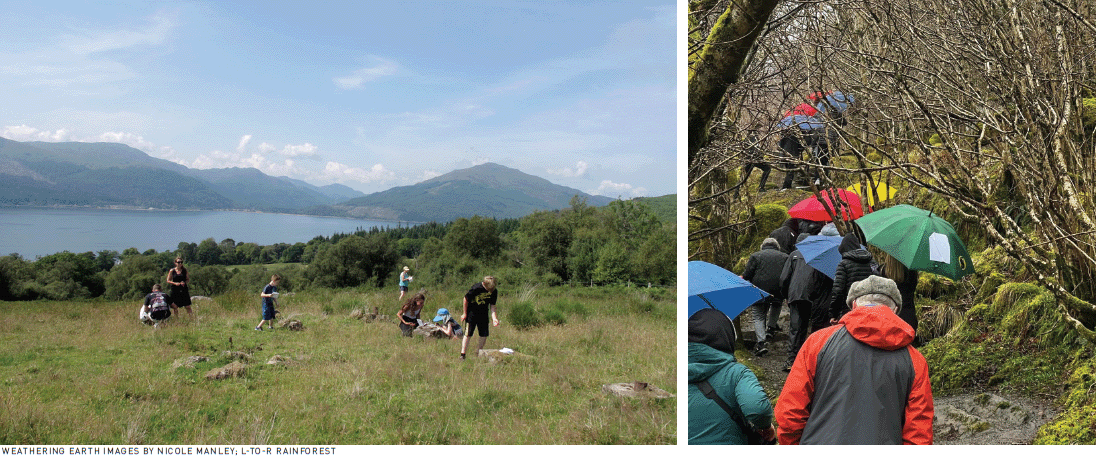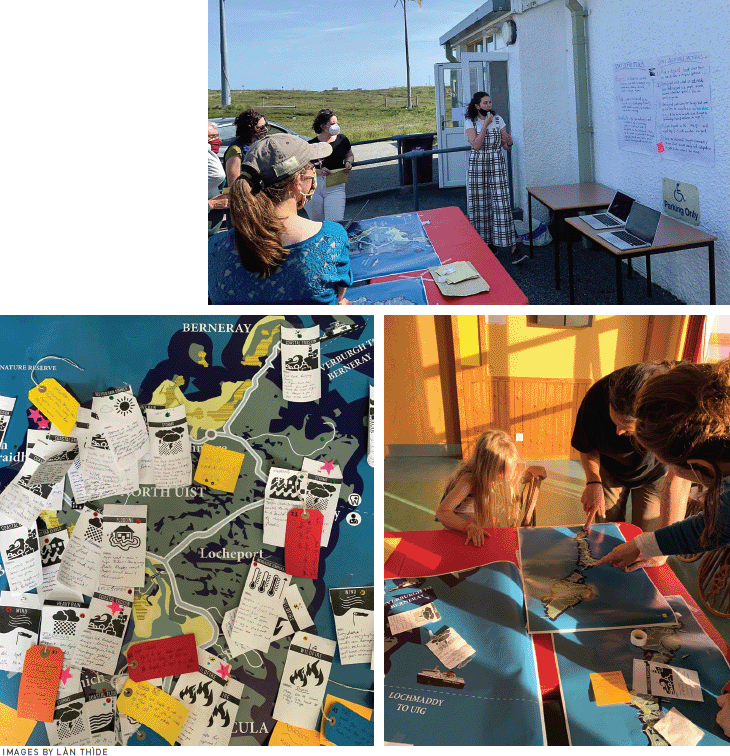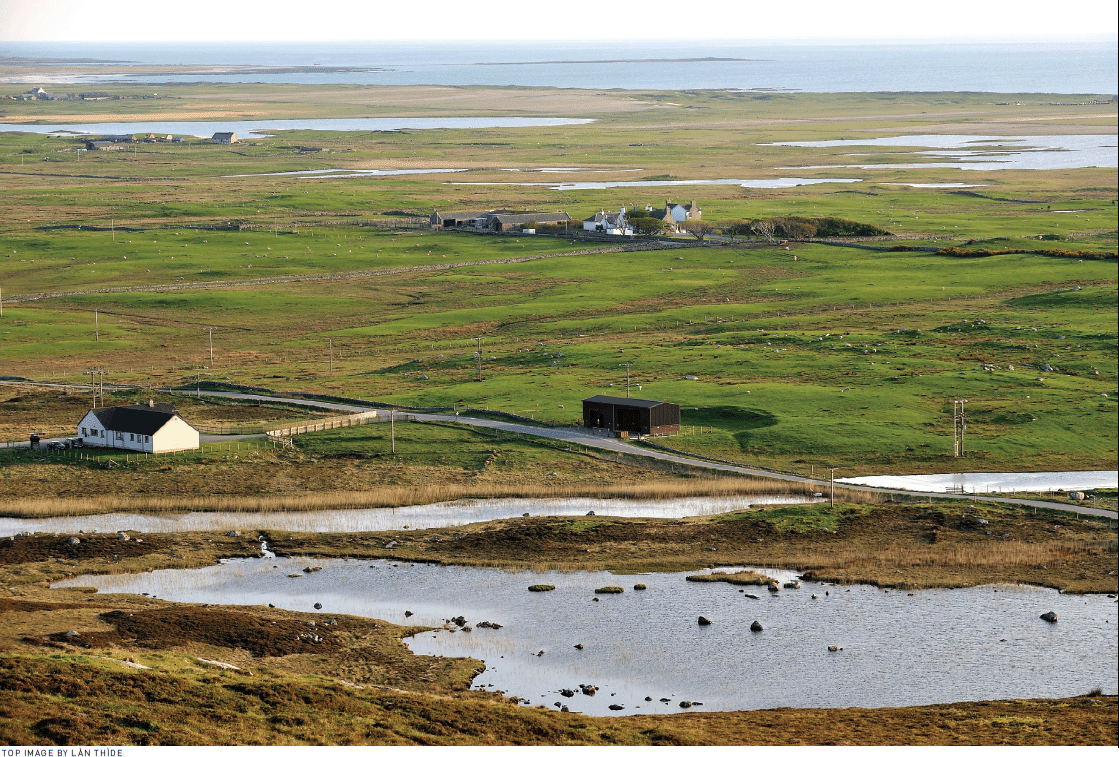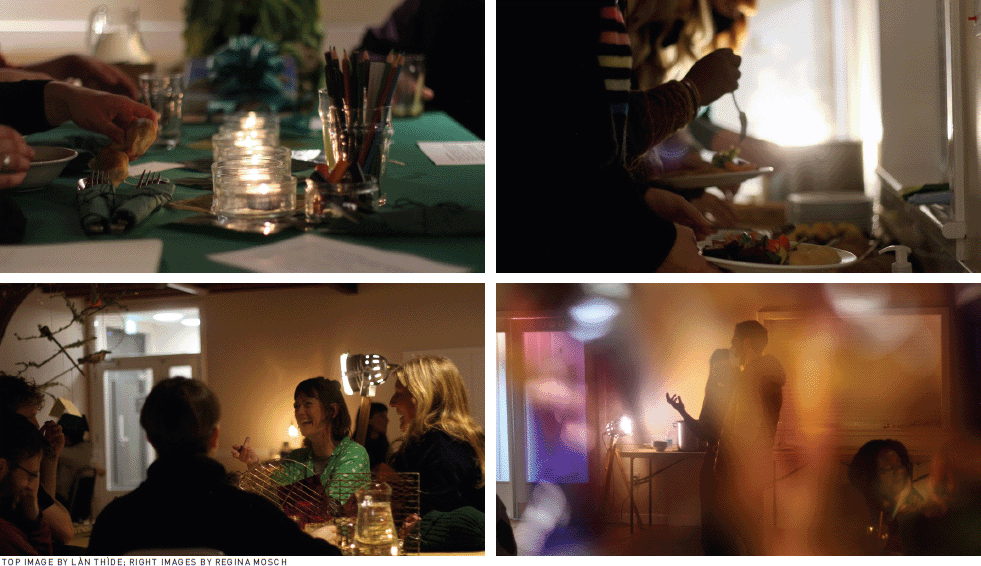Authors:
Lewis Coenen-Rowe, Emma Hall
Global climate change is accelerating, and its impacts are already widely felt, particularly by the most vulnerable. How can we urgently engage with communities to promote understanding and connection so that we can confront the climate crisis together?
Climate Beacons for COP26 connects the arts, heritage, and culture sectors with environmental and climate change organizations to inspire deep-rooted public engagement with climate change in Scotland. The Conference of the Parties, or COP, is the world's most significant annual summit on climate change. The 26th edition was hosted in November 2021 in Glasgow, Scotland. The Climate Beacons project uses creative, arts-based methods embedded within a local context to promote awareness, passion, and action on climate change before, during, and after the COP26 summit.
Seven hubs, known as the Climate Beacons, were established across Scotland, from Midlothian in the south to the most northerly reaches of the Highlands and Islands. Climate change is a complex topic to engage with, involving interconnected, intangible, and abstract long-term threats to society. The project encouraged each regional group to plan their engagement around what would be most relevant to their local communities; many activities were designed around place-based community assets. In Argyll, activities focused on the local temperate rainforest. Communities came together to learn about the rainforest's unique biodiversity and planted new trees to help restore and increase the resilience of this important habitat.
In Midlothian, former mining communities made clay sculptures about local history and climate change to generate tangible, emotional points of connection with the topic and to connect regional legacies of coal mining with a transition to decarbonization.
 | Weathering Earth in Midlothian, an installation of sculptures created by local communities that connects local legacies of fossil fuel extraction to a decarbonized future. |
 | Rainforest planting in Argyll raises awareness of the importance of local biodiversity and building inclusive spaces for conservation and regeneration. |
The Climate Beacons project also centered issues of justice and inclusivity, bringing diverse voices into the climate conversation from remote island communities in the Outer Hebrides and isolated northerly locations in Caithness and East Sutherland. In Caithness, the project explored issues of land ownership and climate colonialism in the Highlands, using storytelling to creatively engage with young people, community foresters, and crofters (people living and working on small farms). They produced The Fifth Giant, a film that created a space for local communities to imagine alternative futures and fairer ways of living on and working with the land.
In the Outer Hebrides, collaborative mapping workshops were used to visualize local knowledge of climate threats and feed back into regional plans for helping the islands adapt to rising sea levels and increased storms. Locating climate-related issues in the places where communities live, work, and play can establish long-term care and connection, inspiring people to think differently and engage in collective action.
 | Interactive mapping in the Outer Hebrides to creatively explore climate hazards, establish adaptation priorities, and platform local knowledge and lived experience. |
Acting on climate change requires radical shifts in our underlying social and cultural norms, and the arts and cultural sectors have an essential role in this transformation. Climate Beacons for COP26 has pioneered an innovative cross-sectoral collaboration to creatively engage communities with climate change through joyful, dynamic, and meaningful activities at a local level across Scotland.
For more information on the Climate Beacons project, visit www.climatebeacons.com or follow Creative Carbon Scotland (@CCScotland) and #ClimateBeacons on Twitter.
Climate Beacons for COP26 is funded by the Scottish Government's Climate Change and Culture Divisions, Creative Scotland, and Museums Galleries Scotland.
 | The island of North Uist in the Outer Hebrides has a wet, low-lying landscape, making it vulnerable to rising sea levels as well as to increased rainfall and erosion. |
 | Stills from The Fifth Giant, a short film exploring human relationships with land, ideas of ownership, and questions of social justice in Caithness and East Sutherland. |
Lewis Coenen-Rowe is culture/SHIFT producer at Creative Carbon Scotland, where he manages the Climate Beacons for COP26 project, runs the Green Tease events series, researches articles for the online Library of Creative Sustainability, and works on applying climate justice principles to the arts and culture sector. [email protected]
Emma Hall is a postgraduate researcher at the University of Glasgow, where she is undertaking a collaborative Ph.D. with Creative Carbon Scotland. Her research explores how arts-based interventions can support sustainable practice at local, regional, and organizational levels. [email protected]
Copyright held by authors
The Digital Library is published by the Association for Computing Machinery. Copyright © 2022 ACM, Inc.






Post Comment
No Comments Found